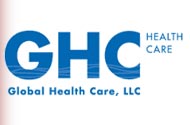
|
OVERVIEW
In February 2007 the American Academy of Family Physicians (AAFP), the American Academy of Pediatrics (AAP), the American College of Physicians (ACP), and the American Osteopathic Association (AOA) published their landmark Joint Principles on the Patient-Centered Medical Home (PCMH). This approach promises comprehensive primary care for children, youth, and adults in a partnership between individual patients and a team of health care professionals at the practice level. The team coordinates care across all elements of the health care system. Increased quality, patient safety, use of technology, performance incentives, accountability, and patient-centeredness are all hallmarks of the medical home model.
By 2010 the medical home model had become one of the most talked-about concepts in health care and the rising star of health care reform and its newest concept, the Accountable Care Organization or ACO. The model was also evolving, with different iterations in the make-up of the medical home team, the way in which care coordination is managed, and the relationship with other members of the "medical neighborhood" -- behavioral health, oral health, social services, and specialty and inpatient care. Even the name was evolving, with "health homes" and "advanced primary care" now used to describe some patient-centered medical home models.
Now it is 2016, and the patient-centered medical home is firmly embedded in the U.S. healthcare landscape. The concept of value-based purchasing, with its demand for documented quality, efficiency, and patient engagement, has been not just embraced but championed by CMS. This is moving the market, and the medical home is the critical foundation of the new delivery models. The Eighth National Medical Home Summit will look at how advanced medical homes fit into this new value-based world and will bring together the leading authorities and practitioners in the medical home field to discuss how it is working, what we are learning from the research, where it has proven outcomes, where it needs improvement, and what issues and challenges lie ahead.
The Summit begins with a morning-long preconference featuring leading researchers who will describe their recent work and what we are learning about medical homes in solo or collaborative models. The plenary sessions feature presentations by the leading figures in the medical home movement, the three most critical organizations concerned with patient and family engagement, and successful health care system and ACO models. Two concurrent sessions on Day 2 highlight innovative local models and new roles and players in medication management, respectively.
|
|
WHO SHOULD ATTEND
- Employers and employer coalitions
- Health plan administrators
- Hospital and health system executives and managers
- Practicing physicians and physician organizations
- Physician assistants, nurse practitioners, nurse case managers and other allied health professionals on the primary care team
- Community clinics and neighborhood health centers
- Patient advocate representatives
- Organizations representing vulnerable populations and individuals with special needs
- Disease management organizations
- Pharmaceutical companies and pharmacy benefit managers
- Health care information technology managers
- Accreditation organizations
- Federal, state, and local government health agencies
- Vendors and consulting firms specializing in medical home related products and services
|
|
|

|

